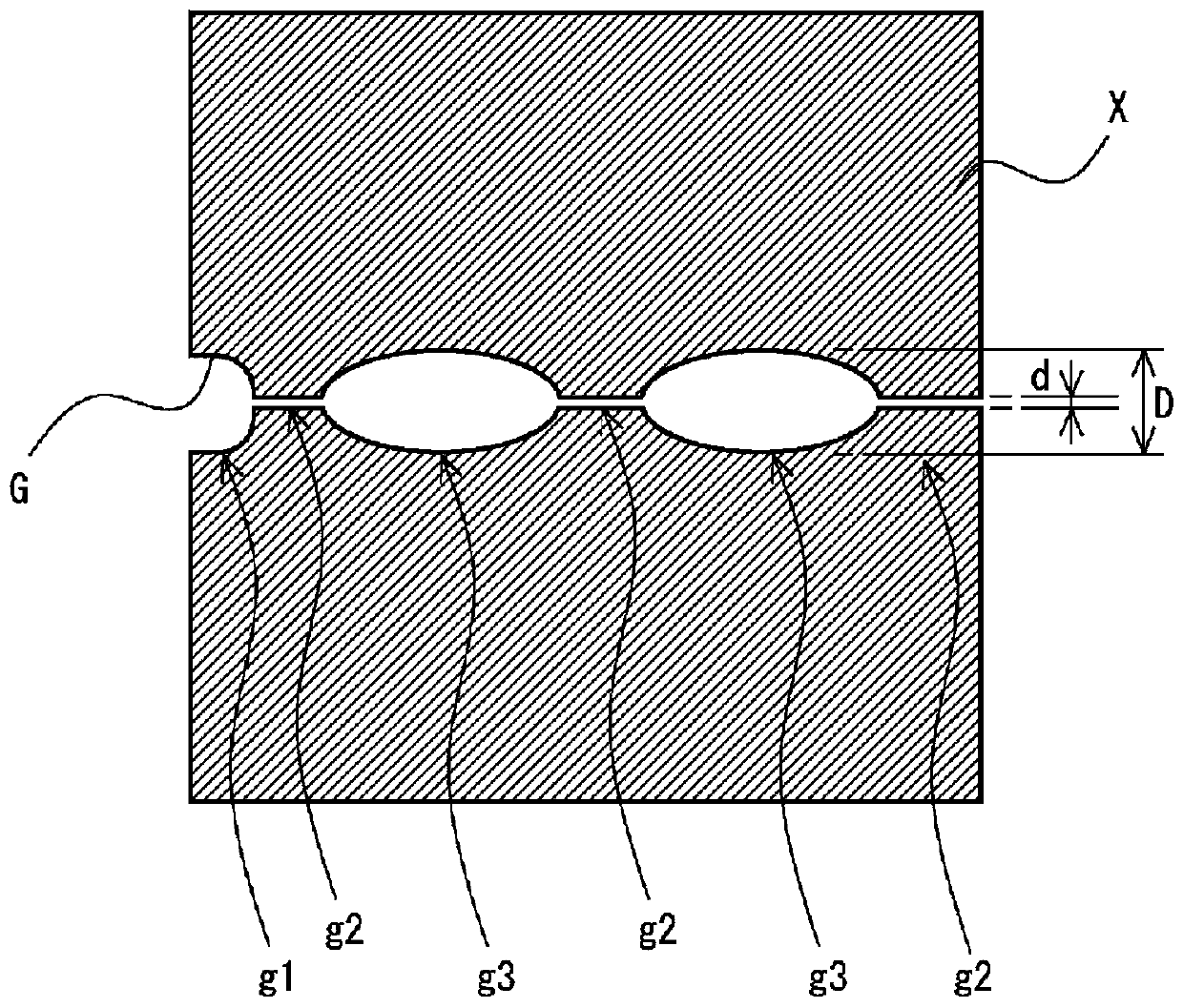Resin composition, molded article and method for producing same
A technology for resin compositions and molded products, which is applied in the field of resin compositions, molded products and their manufacturing, and can solve the problems of lower glass transition temperature elastic modulus, inability to obtain the original physical properties of thermoplastic resins, difficulty in application, etc., and achieve fluidity excellent effect
- Summary
- Abstract
- Description
- Claims
- Application Information
AI Technical Summary
Problems solved by technology
Method used
Image
Examples
Embodiment
[0102] Hereinafter, although an Example demonstrates this invention concretely, this invention is not limited to the following Example.
[0103]
manufacture example 1
[0105] 104 g of novolak-type phenolic resin "SP1010" (manufactured by Asahi Organic Materials Co., Ltd.) (hydroxyl equivalent weight: 104 g / eq) as the first organic compound and 104 g of phenyl glycidyl ether (manufactured by Tokyo Chemical Industry Co., Ltd.) as the second organic compound were charged into a 1 L flask. ) (epoxy equivalent: 150 g / eq) 150 g, heated at 80° C. to melt the novolac resin. 1.5 g of triphenylphosphine (manufactured by Tokyo Chemical Industry Co., Ltd.) was added to the obtained mixture, and after heating up to 110 degreeC, it was made to react for 3 hours. Thereafter, after raising the temperature of the polymer as the reaction product to 170° C., the pressure was reduced, and volatile components were removed over 30 minutes. Thereafter, the pressure was restored, and after cooling to 150° C., the polymer was discharged. The obtained polymer was subjected to gel permeation chromatography ("SC-8020" manufactured by Tosoh, column: "G2000Hxl" and "G40...
manufacture example 2
[0107] As the second organic compound, instead of 150 g of phenyl glycidyl ether, 130 g of phenyl glycidyl ether and 20 g of bisphenol F diglycidyl ether (manufactured by Tokyo Chemical Industry Co., Ltd.) (epoxy equivalent: 340 g / eq) were used. Synthesis was carried out in the same manner as in Production Example 1. The obtained polymer had a Mw of 6,200 as measured by gel permeation chromatography. Let this polymer be polymer B.
PUM
| Property | Measurement | Unit |
|---|---|---|
| melting point | aaaaa | aaaaa |
| epoxy equivalent | aaaaa | aaaaa |
| epoxy equivalent | aaaaa | aaaaa |
Abstract
Description
Claims
Application Information
 Login to View More
Login to View More - R&D
- Intellectual Property
- Life Sciences
- Materials
- Tech Scout
- Unparalleled Data Quality
- Higher Quality Content
- 60% Fewer Hallucinations
Browse by: Latest US Patents, China's latest patents, Technical Efficacy Thesaurus, Application Domain, Technology Topic, Popular Technical Reports.
© 2025 PatSnap. All rights reserved.Legal|Privacy policy|Modern Slavery Act Transparency Statement|Sitemap|About US| Contact US: help@patsnap.com



